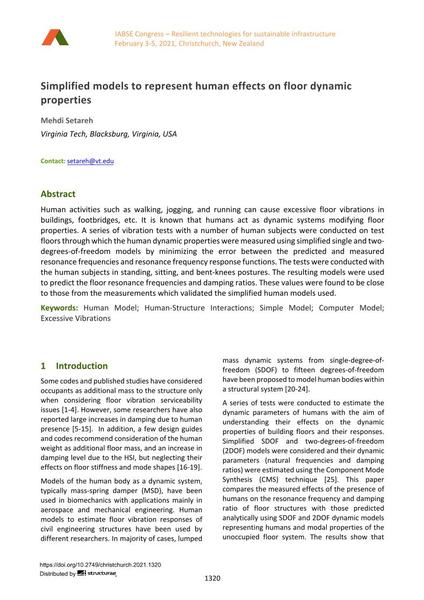Simplified models to represent human effects on floor dynamic properties

|
|
|||||||||||
Bibliografische Angaben
| Autor(en): |
Mehdi Setareh
(Virginia Tech, Blacksburg, Virginia, USA)
|
||||
|---|---|---|---|---|---|
| Medium: | Tagungsbeitrag | ||||
| Sprache(n): | Englisch | ||||
| Tagung: | IABSE Congress: Resilient technologies for sustainable infrastructure, Christchurch, New Zealand, 3-5 February 2021 | ||||
| Veröffentlicht in: | IABSE Congress Christchurch 2020 | ||||
|
|||||
| Seite(n): | 1320-1327 | ||||
| Anzahl der Seiten (im PDF): | 8 | ||||
| DOI: | 10.2749/christchurch.2021.1320 | ||||
| Abstrakt: |
Human activities such as walking, jogging, and running can cause excessive floor vibrations in buildings, footbridges, etc. It is known that humans act as dynamic systems modifying floor properties. A series of vibration tests with a number of human subjects were conducted on test floors through which the human dynamic properties were measured using simplified single and two- degrees-of-freedom models by minimizing the error between the predicted and measured resonance frequencies and resonance frequency response functions. The tests were conducted with the human subjects in standing, sitting, and bent-knees postures. The resulting models were used to predict the floor resonance frequencies and damping ratios. These values were found to be close to those from the measurements which validated the simplified human models used. |
||||
